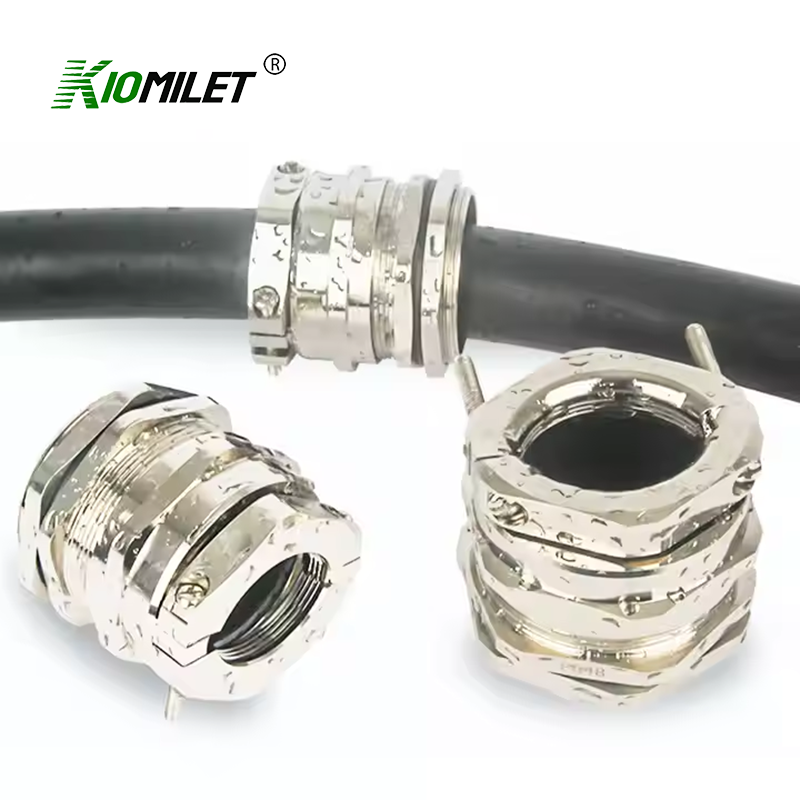
Cable Gland Selection and Usage: A Complete Guide for Secure Cable Entry
When it comes to protecting electrical systems from environmental hazards, cable glands (also known as cord grips or strain relief devices) play a crucial role. They ensure a secure cable entry, prevent dust and moisture ingress protection (IP rated), and provide mechanical stability to cables. Choosing the right cable gland depends on factors like types of thread, cable diameter, and environmental conditions.
In this guide, we’ll explore how to select and use cable glands effectively while incorporating key terms like cord grip, cable entry, strain relief, and more.
What Is a Cable Gland?
A cable gland is a mechanical device designed to attach and secure the end of an electrical cable to equipment, providing strain relief and sealing against external elements. It ensures that cable enters enclosures safely while maintaining ingress protection (IP ratings) against water, dust, and chemicals.
Common applications include:
Industrial control panels
Marine and offshore installations
Hazardous environments (Ex-rated glands)
Outdoor electrical enclosures
For more insights on industrial applications, check out Hermitage Automation.
Key Factors in Cable Gland Selection
1. Types of Thread
Cable glands come with different thread types, including:
Metric (M) – Common in Europe and Asia
PG (Panzergewinde) – Used in older European systems
NPT (National Pipe Thread) – Common in the US for waterproof sealing
G (BSPP – British Standard Parallel Pipe) – Used in the UK and Australia
Choosing the correct types of thread ensures compatibility with enclosures and junction boxes.
2. Ingress Protection (IP Rating)
A cable gland must match the required IP rating of the enclosure:
IP54 – Dust and splash-proof
IP66/IP67 – Water-resistant (high-pressure jets or temporary submersion)
IP68 – Fully waterproof for permanent submersion
For detailed IP rating explanations, visit Indupart.
3. Material and Environmental Resistance
Plastic (Nylon, PVDF) – Lightweight, corrosion-resistant (suitable for indoor use)
Brass/Nickel-Plated – Durable, anti-corrosive (ideal for marine and chemical environments)
Stainless Steel (316L) – High corrosion resistance (used in food processing and offshore rigs)
4. Cable Diameter and Strain Relief
A proper cord grip must match the cable’s outer diameter to ensure strain relief and prevent tugging damage. Always check the manufacturer’s sizing chart before installation.
For industrial-grade cable entry solutions, explore JJSea.
How to Install a Cable Gland Properly
Select the Correct Size – Ensure the gland fits the cable diameter.
Prepare the Cable – Strip the outer sheath if necessary.
Thread the Gland – Screw the gland into the enclosure’s entry point.
Tighten Securely – Use a wrench to ensure a watertight seal.
Test for Sealing – Verify ingress protection with a pressure test if needed.
For step-by-step guides, refer to Frontier Electric.
Common Mistakes to Avoid
Using the Wrong Thread Type – Mismatched threads can lead to poor sealing.
Over-Tightening – Can damage the cable or gland.
Ignoring Environmental Conditions – Always choose glands rated for the operating environment.
For expert opinions on electrical safety, visit Ars Technica.
Conclusion
Selecting the right cable gland ensures long-term reliability and ingress protection for electrical systems. By considering factors like types of thread, strain relief, and IP ratings, you can optimize cable entry security in any application.
For more SEO-optimized electrical guides, check WordDisk and Vocal Media.
By following this guide, you can enhance cable management and protect your installations from environmental damage effectively.
